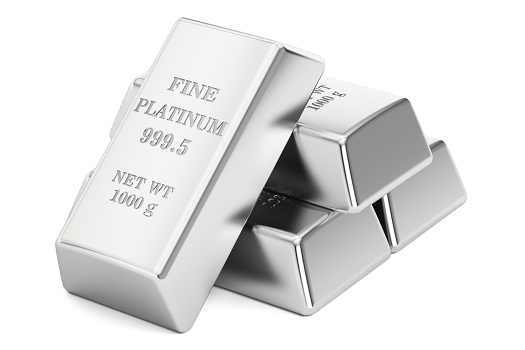How Can I Be Sure My Platinum Is Real?
While gold and silver get a lot of the attention in the world of precious metals, platinum can be just as appealing. In fact, its value is normally higher than what’s typical with gold. But it’s not always easy to identify real platinum, since it can be mistaken for white gold or silver—or it may not be the genuine thing at all. The precious metals experts from First National Bullion, the platinum, silver, and gold dealers San Diego collectors rely on for outstanding quality and service, explain some ways to tell if your platinum is the real deal.
Do a Visual Inspection
The first step you can take when determining if a solid form of metal is platinum or not is to do a visual inspection. Some solid forms of platinum are often marked or stamped. If the word “platinum” is engraved on what you have, this means it’s at least 95 percent pure platinum. You may also see a figure followed by “PT” or “PLAT” that indicates the exact percentage of platinum. Other visual signs of real platinum include:
• A color brighter and whiter than what’s normally seen in white gold or silver
• Few scratches, since platinum is scratch resistant
• No tarnishing—platinum doesn’t tarnish, corrode, or rust
• Lack of discoloration—real platinum doesn’t typically lose its color
If your metal is whiter or feels kind of soft, it may be platinum-iridium. This is the term for alloys that fall within the platinum group that are sometimes used during the manufacturing process. This is done because platinum alloys are easier to work with. It’s not uncommon for platinum to be mixed with some other type of alloy. In instances like this, there’s still some percentage of actual platinum.
Use a Magnet
Platinum isn’t magnetic. If you hold a magnet to a solid piece of metal you think might be the real thing and it shows signs of being magnetic, it’s not real platinum. If you notice a slight magnetic pull, you probably have white gold mixed with a bit of nickel.
Use an Acid Scratch Test Kit
If your questionable metal has no clear markings, purchase an acid scratch test kit. You should be able to find one online. These kits typically include a scratch stone and different types of acid. Complete this test by:
• Scratching the metal in a place where it won’t be noticeable
• Wearing gloves and using the dropper to put some acid on the scratch
• Waiting for a reaction—or a lack of one, since real platinum won’t dissolve immediately
Note: If the metal turns out not to be real platinum, continue the test with the other acids in the kit. This will help you determine what kind of metal you actually have.
Have a Precious Metals Dealer Check It Out
If you’re still in doubt about whether or not you have real platinum, go to a reputable precious metals dealer or firm. They should be able to give you an honest assessment and documented proof of the value and platinum content of your metal.
Whether they’re veteran platinum collectors or investors looking to buy silver bars, San Diego residents should reach out to the experts at First National Bullion. We offer a huge selection of platinum, gold, and silver items. San Diego collectors who are looking for the finest-quality coins, bars, and bullion should give us a call at 858-666-6570 to speak with one of our precious metals experts.
The statements made in this blog are opinions, and past performance is not indicative of future returns. Precious metals, like all investments, carry risk. Precious metals and coins may appreciate, depreciate, or stay the same in cash value depending on a variety of factors. First National Bullion does not guarantee, and its website and employees make no representation, that any metals for sale will appreciate sufficiently to earn the customers a profit. The decision to buy, sell, or borrow precious metals and which precious metals to purchase, borrow, or sell are made at the customer’s sole discretion.


